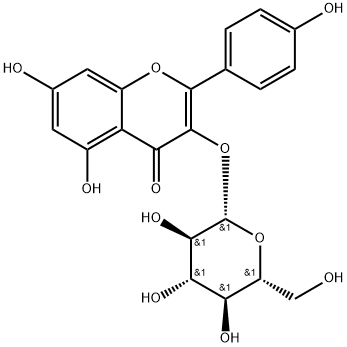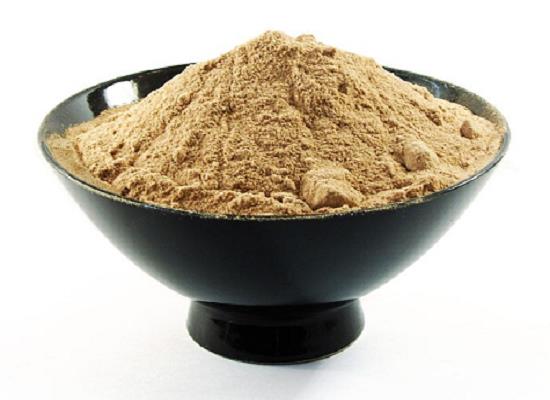Astragalin: A Bioactive Phytochemical with Potential Therapeutic Activities
Abstract
Natural products, an infinite treasure of bioactive chemical entities, persist as an inexhaustible resource for discovery of drugs. This review article intends to emphasize on one of the naturally occurring flavonoids, astragalin (kaempferol 3-glucoside), which is a bioactive constituent of various traditional medicinal plants such as Cuscuta chinensis. This multifaceted compound is well known for its diversified pharmacological applications such as anti-inflammatory, antioxidant, neuroprotective, cardioprotective, antiobesity, antiosteoporotic, anticancer, antiulcer, and antidiabetic properties. It carries out the aforementioned activities by the regulation and modulation of various molecular targets such as transcription factors (NF-κB, TNF-α, and TGF-β1), enzymes (iNOS, COX-2, PGE2, MMP-1, MMP-3, MIP-1α, COX-2, PGE-2, HK2, AChe, SOD, DRP-1, DDH, PLCγ1, and GPX), kinases (JNK, MAPK, Akt, ERK, SAPK, IκBα, PI3K, and PKCβ2), cell adhesion proteins (E-cadherin, vimentin PAR-2, and NCam), apoptotic and antiapoptotic proteins (Beclin-1, Bcl-2, Bax, Bcl-xL, cytochrome c, LC3A/B, caspase-3, caspase-9, procaspase-3, procaspase-8, and IgE), and inflammatory cytokines (SOCS-3, SOCS-5, IL-1β, IL-4, IL-6, IL-8, IL-13, MCP-1, CXCL-1, CXCL-2, and IFN-γ). Although researchers have reported multiple pharmacological applications of astragalin in various diseased conditions, further experimental investigations are still mandatory to fully understand its mechanism of action. It is contemplated that astragalin could be subjected to structural optimization to ameliorate its chemical accessibility, to optimize its absorption profiles, and to synthesize its more effective analogues which will ultimately lead towards potent drug candidates.
1. Introduction
Medicinal plants have been an infinite source of therapeutic agents since millions of years. Most of the discovered drugs either belong to natural products or derivatives of natural compounds [1, 2]. The actual fact is that nature is the creator of seemingly limitless series of molecular structures. These structures can serve as unlimited sources for the development of drugs, robust chemotypes, and pharmacophores which are able to be amplified into scaffolds of novel drugs for the cure of various ailments [3]. Before the advent of the postgenomic era with high throughput screening, approximately 80% of drugs were either pure extracts of medicinal plants or the semisynthetic analogues of various compounds from natural sources [4]. After the second world war, the pharmaceutical research expanded to massive screening of plant extracts in search of new drugs from natural resources [5]. To date, about 61% of anticancer and 49% of anti-infective compounds have been discovered from natural products [6].
The term “natural products” encompasses chemical entities derived from plants, bread molds, microorganisms, terrestrial vertebrates as well as invertebrates, and marine organisms [7]. These chemical entities are known to have immense chemical diversity with outstanding drug-like properties that contribute towards their multitargeted action [8]. A lot of plant-derived bioactive compounds are used for the cure as well as for the prevention of several diseases. Among these compounds are the polyphenols consisting of alcohols with ≥2 benzene rings and ≥1 hydroxyl group. These polyphenols have a range from simple structural molecules (flavonoids and phenylpropanoids) to highly complex compounds (lignins and melanins). Reports have suggested that polyphenols in general and flavonoids in particular exhibit various biological effects like antiallergic, antibacterial, anti-inflammatory, antiviral, antithrombic, hepatoprotective, antibacterial, and antioxidant activities [9].
Flavonoids are structurally diverse and most abundantly found polyphenols in the human diet [10]. They are mostly found in the form of glycosides and acylglycosides. Flavonoids have been divided into various classes such as flavones, flavonols, flavanones, flavanonols, flavanols or catechins, and anthocyanins. They are the essential constituents of our food and are found in onions, parsley, berries including blue berries, black tea, green tea, bananas, red wine, all citrus fruits, sea blackthorns, and dark chocolates with the contents of 70% or more [11].
Astragalin (kaempferol-3-O-β-D-glucoside), a bioactive natural flavonoid, has been well known for its medicinal importance. It has been reported to exhibit multiple pharmacological properties including antioxidant [12, 13], anti-inflammatory [14], anticancer [15], neuroprotective [16], and cardioprotective property [16].

2. Natural Sources of Astragalin
Astragalin, a naturally occurring flavonoid, has been identified in a variety of plants (Figure 1 and Table 1) such as Cuscuta chinensis Lam., a member of the Convolvulaceae family, which consists of about 60 genera and 1,650 species. The seeds of the genus Cuscuta are a rich source of astragalin and are utilized as a traditional folk medicine to cure osteoporosis in various Asian countries including Pakistan [17]. C. chinensis has high contents of astragalin, that is, 29–34% of total phenolics as compared to other species [18]. Cassia alata belongs to the family Fabaceae (the largest family among angiosperms) that comprises of ∼700 genera and 20,000 species. The leaves of C. alata are found to be effective against skin diseases including eczema and chronic skin impurities in tropical regions of the world (Malaysia, Brazil, and Indonesia) [19]. Astragalin has also been isolated from the plants of Ebenaceae, Rosaceae, and Eucommiaceae families.
Astragalin can also be produced in vivo by glycosylation of kaempferol at the 3C-O position [20]. UDP-dependent glycosyltransferases (UGT) were used as biocatalysts in the synthesis of astragalin. A recombinant strain of Arabidopsis thaliana was used to construct an efficient UDP-glucose synthesis pathway by use of enzymes such as uridylyltransferase, sucrose phosphorylase, and sucrose permease. BL21-II was a recombinant strain designed to scale up the production of astragalin by using a fed-batch fermentator.
3. Biological Activities of Astragalin and Their Mechanisms of Action
The biologically active and therapeutically effective compound “astragalin” has been known to possess broad spectrum of pharmacological features such as anticancer, anti-inflammatory, antioxidant, neuroprotective, antidiabetic, cardioprotective, antiulcer, and antifibrotic as shown in Figure 2. Various in vivo and in vitro investigations on astragalin have elucidated its medicinal characteristics and mechanism of actions.
You may like
Related articles And Qustion
See also
Lastest Price from ASTRAGALIN manufacturers

US $10.00/KG2025-09-03
- CAS:
- 480-10-4
- Min. Order:
- 1KG
- Purity:
- 99%
- Supply Ability:
- 500000KG

US $0.00/KG2025-04-21
- CAS:
- 480-10-4
- Min. Order:
- 1KG
- Purity:
- 99%
- Supply Ability:
- 100 MT



